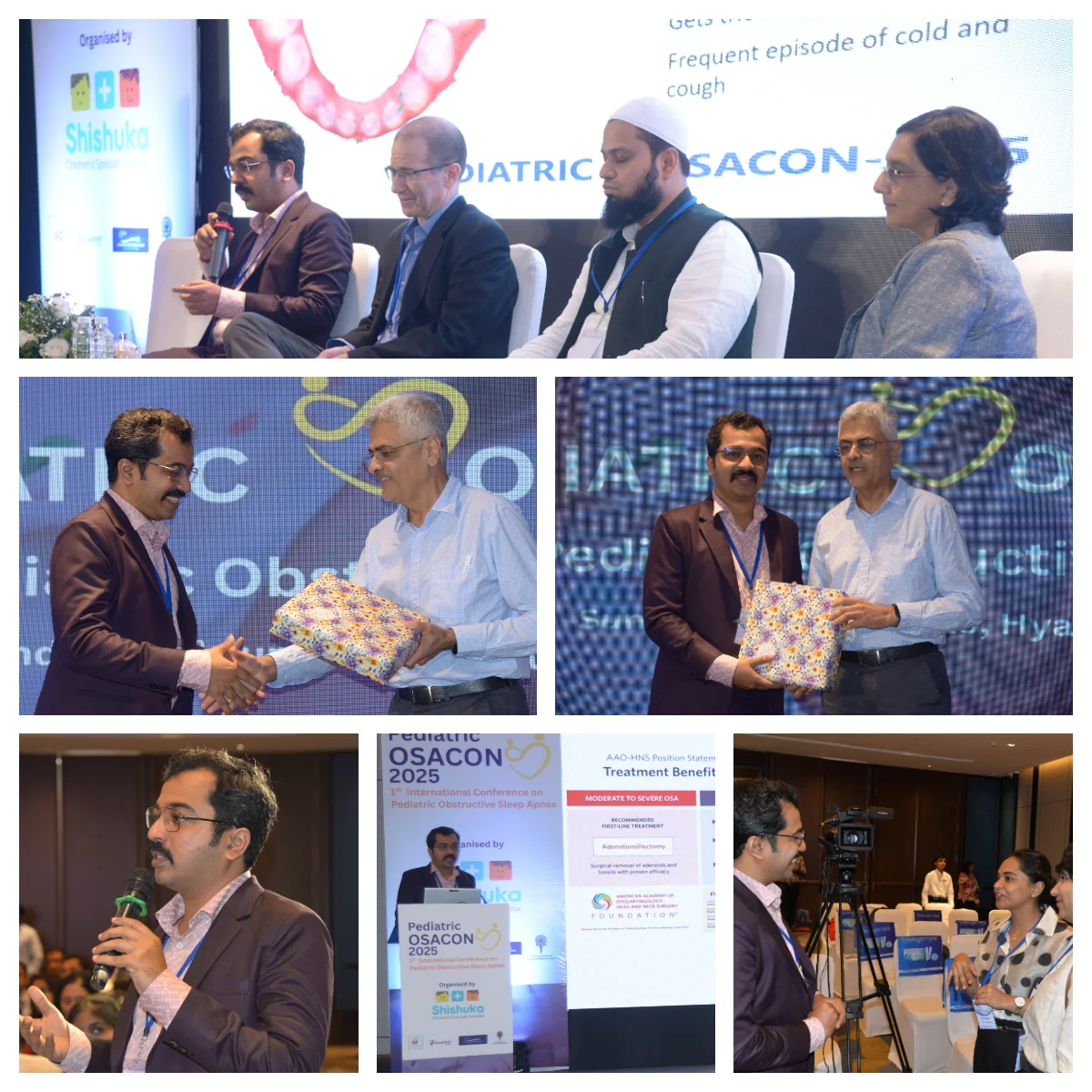
Recently, I had the privilege of speaking at the 1st International Pediatric OSA Conference (OSACON 2025) held in Bangalore—a remarkable event that brought together global experts in pediatric pulmonology, ENT, dental sleep medicine, and sleep diagnostics. In this conference, I had the opportunity to speak on a subject that’s at the heart of pediatric ENT practice—adenotonsillectomy in children. With growing concern about surgical safety and recovery, my talk focused on how the procedure has evolved to become safer and less traumatic for children.
Adenotonsillectomy: Still the Gold Standard?
Adenotonsillectomy continues to be the first-line surgical treatment for pediatric obstructive sleep apnea (OSA), especially in children with enlarged tonsils and adenoids. When appropriately indicated, the procedure is not only effective in relieving airway obstruction but also improves sleep quality, behavior, growth, and even academic performance.
Despite being one of the most commonly performed pediatric surgeries, safety remains a top concern for both parents and clinicians. Fortunately, multiple studies have shown that adenotonsillectomy, when conducted with proper preoperative evaluation and postoperative monitoring, is generally safe—with low complication rates. Common postoperative concerns include bleeding, pain, and dehydration, but these are mostly manageable with protocol-based care.
Key Innovations That Are Redefining Safety and Outcomes
One of the biggest game-changers in tonsil surgery has been coblation (controlled ablation). Unlike conventional electrocautery, coblation uses low-temperature plasma to dissect tissue with minimal thermal damage. This results in:
- Less intraoperative bleeding
- Reduced postoperative pain
- Faster recovery
- Lower complication rates
The technology allows for a cleaner surgical field and greater precision—especially important in pediatric patients with smaller anatomy and higher sensitivity.
Intracapsular (Partial) vs Extracapsular Tonsillectomy
Traditionally, extracapsular tonsillectomy involved complete removal of the tonsil, including its capsule, but at the cost of increased pain and bleeding risk. Now, intracapsular tonsillectomy—where the tonsil is debulked but the capsule left intact—is gaining popularity for several reasons:
- Significantly less postoperative pain
- Lower risk of hemorrhage
- Minimal impact on surrounding structures
- Fewer emergency visits post-surgery
Though there’s a small chance of tonsillar regrowth, studies show this is rare and outweighed by the immediate benefits in most cases.
Reduced Mortality and Morbidity: A Reality Today
Thanks to these advancements, adenotonsillectomy today is safer than ever before. When performed with modern techniques like coblation and under experienced hands, the risk of life-threatening complications is exceptionally low.
- Postoperative hemorrhage rates have decreased notably with intracapsular and coblation methods.
- Pain management is more effective, leading to better hydration and fewer secondary complications like dehydration or infection.
- Same-day discharge is now feasible for many patients with appropriate monitoring protocols.
The Bigger Picture: A Holistic Approach to Pediatric OSA
This year’s OSACON strongly emphasized team-based care. Effective OSA treatment goes beyond surgery—it involves pediatric pulmonologists, sleep specialists, dentists, and myofunctional therapists working together for individualized, long-term solutions.
Final Thoughts
Modern-day adenotonsillectomy is no longer the daunting surgery it once was. With coblation technology and a shift toward intracapsular techniques, we are now able to offer children a faster, gentler recovery with excellent outcomes.
It was a privilege to share these insights at OSACON 2025 and learn from other experts leading change in pediatric sleep medicine. As we continue to adopt evidence-based, minimally invasive approaches, the future looks promising—for both our young patients and their families.
If you’re a parent, ENT professional, or healthcare provider interested in these updates, feel free to connect with me for further discussion or clinical collaborations.